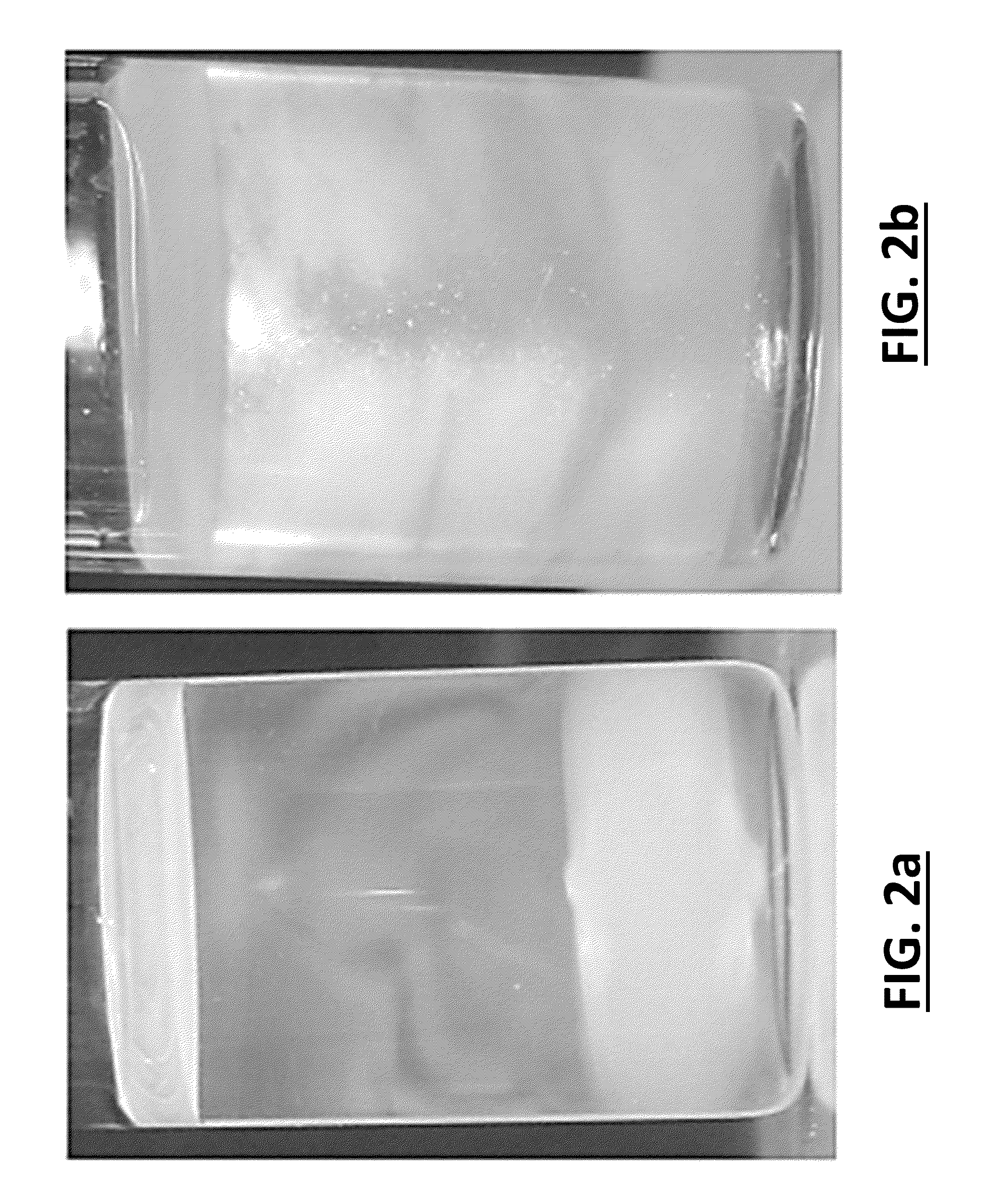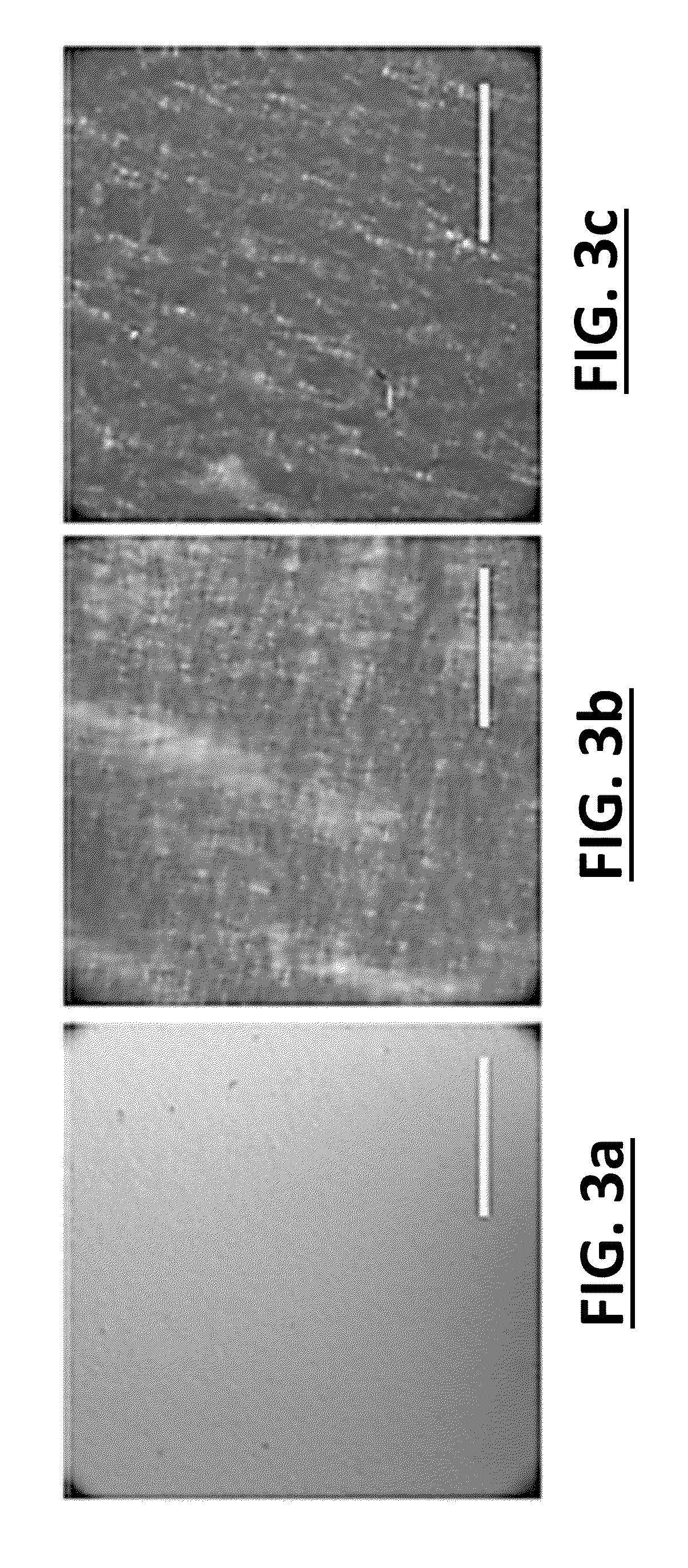Reinforced Epoxy Nanocomposites and Methods for Preparation Thereof
a technology of reinforced epoxy and nano-composites, which is applied in the field of reinforced epoxy nano-composites, can solve the problems of cncs' hydrophilic nature, affecting the quality of epoxy nano-composites, and requiring extra steps
- Summary
- Abstract
- Description
- Claims
- Application Information
AI Technical Summary
Benefits of technology
Problems solved by technology
Method used
Image
Examples
example 1
CNC / Epoxy Nanocomposite Preparation
[0083]CNC / hardener / acetone suspensions were created for all three types of hardeners at various concentrations of CNCs. In detail, freeze-dried CNCs were first dispersed in deionized water to reach 5 wt % suspension. Following the previous solvent exchange sol-gel process developed for dispersing CNCs in polymer by Capadona et al (Nat. Nanotechnol. 2007, 2, 765-769), 15 mL of acetone was added to 2 mL of CNC water suspension. To create the CNC / acetone organogel, the top acetone layer was replaced with fresh acetone every 24 hours. After 48 hours, the hardener was added to the CNC / acetone organogel and allowed to immerse for one hour. The CNC / acetone organogel was then redispersed in hardener using a sonifier (S-250D, Branson Ultrasonics Corp., Danbury, Conn., USA) at 25% amplitude and one-second on / off cycles until a transparent suspension was achieved.
[0084]The CNC / hardener / acetone suspension was mixed with DGEBA using a vortexer (VWR, West Cheste...
example 2
Equivalent Acetone (EQA) Specimen Preparation
[0085]The residual acetone in CNC / acetone organogel was calculated gravimetrically. The same amount of acetone was added to hardeners and DGEBA during mixing to create the corresponding EQA specimens. Acetone was subsequently removed during the degassing step. The EQA specimens were cured following the same procedure as their corresponding CNC specimens. All types of specimens created were listed in Table 1.
TABLE 1Summary of Nanocomposite CompositionsAcetoneNanocmpositecontentWt %composition (perbeforeof CNCHard-100 part hardener)degas (perin finalenerHard-Ep-100 partnano-Sample typetypeCNCeneroxyhardener)compositeJD400_neatJD400100151.5JD400_C_0·41100151.5150.4JD400_C_1·213100151.5561.21JD400_C_2·055100151.5932.05JD400_A_0·4100151.515JD400_A_1·21100151.556JD400_A_2·05100151.593DETA_neatDETA100843.2DETA_C_0·43.65100843.2400.4DETA_C_0·565100843.2600.56DETA_C_0·918100843.2880.91DETA_C_1·1610100843.21971.16DETA_A_0·4100843.240DETA_A_0·561008...
example 3
Dispersion of CNCs in Hardeners
[0086]Good dispersion of CNCs within epoxy is necessary to maximize performance of the resulting CNC / epoxy nanocomposite. CNC / epoxy nanocomposites are generally prepared through co-mixing epoxy, hardeners, and CNCs in situ. In the method of the present invention, a approach was taken by dispersing CNCs in hardeners first before mixing with epoxy resin. Bisphenol A (BPA) based epoxy is generally hydrophobic, which makes CNC dispersion difficult, while the hardeners are typically more hydrophilic. The amine group on the hardeners can form cationically charged moieties that can interact with the negatively charged CNC surface, which may increase CNC dispersion. Once predispersed, the CNCs would then be easier to disperse in the BPA epoxy phase. The hardeners are acting similar to dispersants to minimize aggregation. Additionally, the CNCs may be kinetically trapped by the higher viscosity or form charged complexes leading to higher dispersion. Due to thes...
PUM
| Property | Measurement | Unit |
|---|---|---|
| Temperature | aaaaa | aaaaa |
| Temperature | aaaaa | aaaaa |
| Percent by mass | aaaaa | aaaaa |
Abstract
Description
Claims
Application Information
 Login to View More
Login to View More - R&D
- Intellectual Property
- Life Sciences
- Materials
- Tech Scout
- Unparalleled Data Quality
- Higher Quality Content
- 60% Fewer Hallucinations
Browse by: Latest US Patents, China's latest patents, Technical Efficacy Thesaurus, Application Domain, Technology Topic, Popular Technical Reports.
© 2025 PatSnap. All rights reserved.Legal|Privacy policy|Modern Slavery Act Transparency Statement|Sitemap|About US| Contact US: help@patsnap.com



